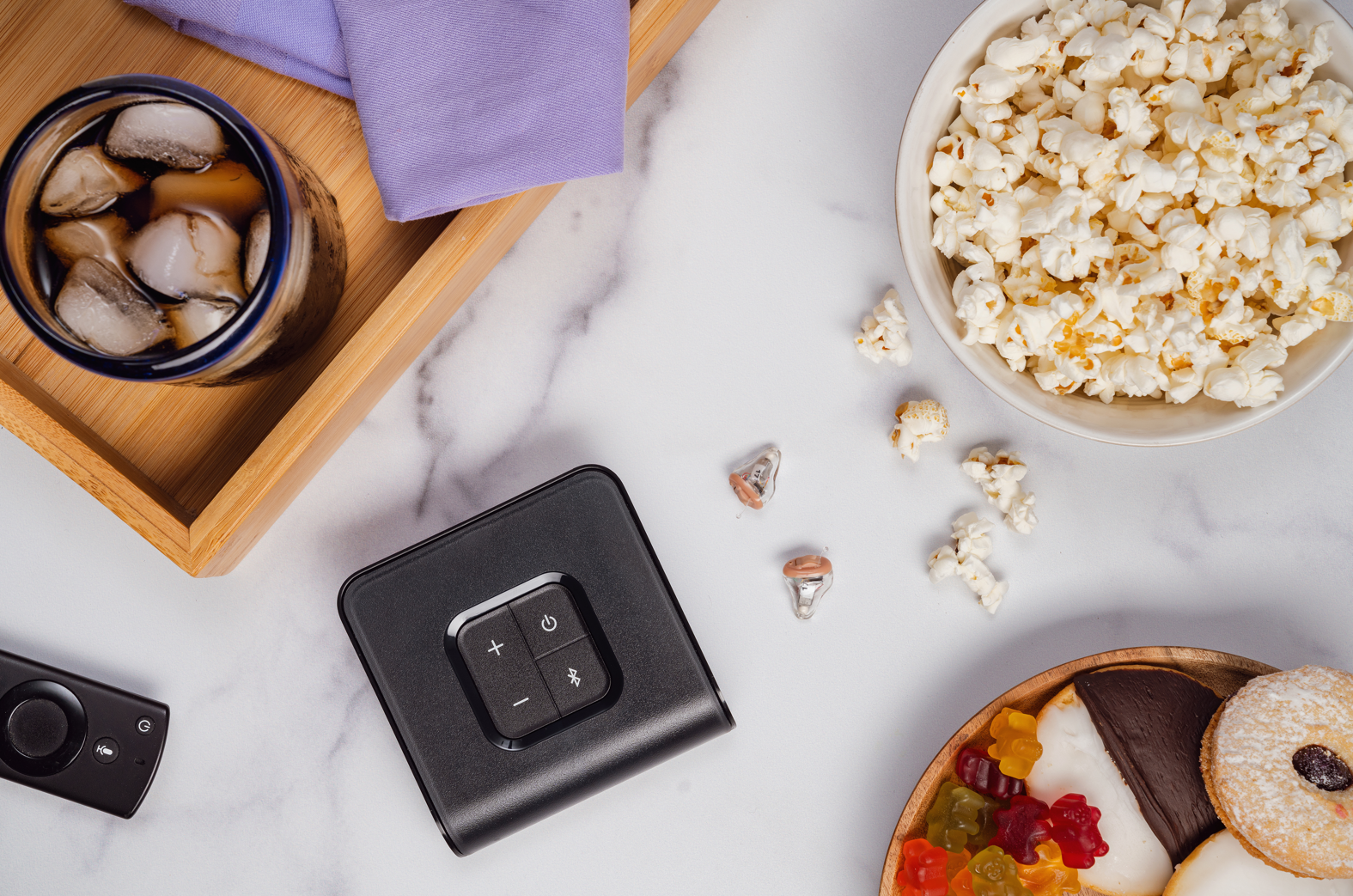Last week, we shared a descriptive timeline of hearing aids from their earliest inceptions in the 19th Century to the breakthrough of digital sound processors at the end of 20th Century. Today, we’ll focus on hearing aids available today and how they are truly modern marvels that provide life-changing hearing and health benefits.
Chapter 2: Hearing Aids Present, The Modern Marvels
 Building on the foundation laid in 1996, digital sound processing continues to evolve and enable hearing aids to analyze and adapt to different sound environments in real-time. Whether in a bustling cafe, a quiet library, or a crowded theater, users benefit from improved clarity and reduced background noise.
Building on the foundation laid in 1996, digital sound processing continues to evolve and enable hearing aids to analyze and adapt to different sound environments in real-time. Whether in a bustling cafe, a quiet library, or a crowded theater, users benefit from improved clarity and reduced background noise.
During this timeframe, another transformative feature is built into hearing aids: directional microphones using beamforming technology. Instead of amplifying all sounds around the wearer, the directional microphones can focus on sounds coming from specific directions, like a person speaking in front of the user.
Hearing Aids Are “Smart” Technology
The rise of wireless technology over the last decade has revolutionized hearing aids. Many modern devices now support Bluetooth connectivity, allowing users to pair their hearing aids with smartphones, tablets, and televisions. This integration turns hearing aids into personal audio devices, ideal for streaming calls, music, and more. Additionally, smartphone apps come with most prescription devices (hearing aids purchased through a licensed hearing care professional). Apps let the user adjust settings like volume, noise reduction, and program modes discreetly from their devices.
One of the most recent innovations are more advanced devices that can “learn” from the user and surroundings to provide a customized service or outcome.
Examples of this hearing aid technology include:
For those who suffer from tinnitus (ringing, buzzing, or hissing in the ears), many hearing aids also feature tinnitus masking to help relieve symptoms.
Worry-Free Continuous Listening
Since 2016, rechargeable hearing aids have transformed the experience of assistive technology. Now the most popular option for hearing aid wearers, rechargeable hearing aids can provide non-stop listening for 20 to 30 hours after an overnight charge. Not only do these devices provide long-lasting power on a single charge, but they also reduce the waste of dead batteries and plastic packaging, making them a sustainable option.
Discreet and Stylish Designs
 Style is no longer sacrificed for functionality. Hearing aids now come in various designs, from nearly invisible in-the-canal models to sleek behind-the-ear options available in an array of different colors to suit hair color, skin color, or style preference. A licensed hearing care professional can help you determine the style that would best benefit your level of hearing loss.
Style is no longer sacrificed for functionality. Hearing aids now come in various designs, from nearly invisible in-the-canal models to sleek behind-the-ear options available in an array of different colors to suit hair color, skin color, or style preference. A licensed hearing care professional can help you determine the style that would best benefit your level of hearing loss.
But Wait…There’s More!
A range of accessories are available to further enhance the functionality of many hearing aids. For example, remote microphones can improve hearing in noisy environments by transmitting a speaker's voice from a pocket or table microphone directly to the hearing aids. TV streamers allow users to enjoy clear audio from their television without disturbing others with high volumes.
Modern hearing aids offer unprecedented adaptability and personalization to meet the diverse needs of individuals with hearing loss. To learn more about today’s technology, visit Hearing.org or contact a nearby licensed hearing care professional to discuss hearing technology options. Next week, we’ll delve into the future of hearing aid technology, exploring the groundbreaking developments on the horizon that promise to push the boundaries even further.